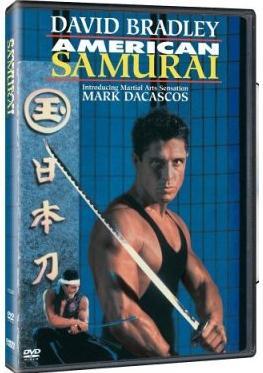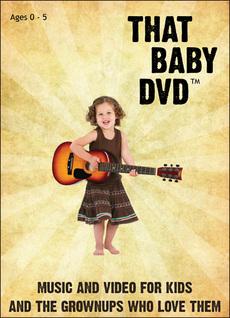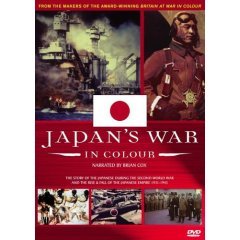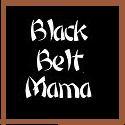Trip Flix
"Are we there yet?"
The most annoying question in the world when you’re stuck in the car with a couple of road-weary kids just got a little less frequent. Trip Flix is like a history lesson and fun distraction all rolled into one and it can help to make long roadtrips much more bearable.
Developed by some road-weary parents, Trip Flix divides the country up into small sections and tells you interesting tidbits about each state as you go. The DVD is interactive, so if you have a remote control in the car, kids can easily take guesses at silly or historical questions as they drive.
The two teenage hosts travel throughout the country to different locations and through their experiences, kids learn a little something about where they’re going or where they’re traveling through. From a boat-making experience in the northeast, to an encounter with gnomes and caves, Trip Flix offers a little bit of something for everyone.
While my 7-year old watched with great interest, my 2-year old wasn’t quite as intrigued. I would definitely recommend Trip Flix for older children. I can’t see kids under the age of five wanting to trade in their Mickey Mouse Clubhouse movie in favor of Trip Flix. But, for a bored-to-near-death child who likes to learn a little something, Trip Flix is an interesting and fun way to pass the time.
My only complaint about the DVD is that the volume was not consistent throughout. We were frequently adjusting the volume as some segments would be much louder or softer than others.
Trip Flix is available to purchase through the Trip Flix website or directly from Amazon for $19.99. If you have a child you’d like to distract on a long ride (or even a rainy afternoon in the family room), Trip Flix is definitely worth a look.
BBM gives Trip Flix. . .
![]()
American Samurai
This movie was bought for me as a gift. I really appreciated the sentiment – the gift giver knew I liked Samurai and Period-Piece movies, and this one had "Samurai" written right in the title.
I appreciated the thought…but that’s essentially where the good feelings end.
This movie is pretty terrible…but you probably guessed that with a name like "American Samurai," right? Created in 1992, American Samurai arrived on the heels of a large ninja craze. But when ninjas were being phased out after their 80s boom, there was a need for other crappy martial arts inspired movies. Hence American Samurai.
To fill you in quickly on the plot – two half brothers are raised by a kenjutsu (sword) master. Their family sword gets stolen and this causes a rift in the family, forcing the brothers to go separate ways. Eventually they meet back up in an underground turkish fighting ring. Combat ensues tournament style.
Flashback a few years to 1988 when Bloodsport hit the scenes. Initially it had a lukewarm reception, but has grown into a cult classic. I personally love that movie, even with all of its bad acting and thin plot. Bloodsport is one of those rare movies that is bad…yet so good. American Samurai seemed to notice this unusual achievement and thought "hey, we can do that! Let’s throw some swords into it and we’ve struck gold!"
I suppose we have to give them a little credit for trying, but they fell short of the mark. The acting is unpleasant and the story is like a thinner version of Bloodsport. It feels like they gathered up as many martial art cliches (the outsider prodigy, the feuding brothers, the underground tournament…etc etc) and mixed them all up into script soup.
I did try to keep an open mind and recognize the movie for its decent qualities. The actual combat is choreographed well. I was expecting some pretty rough stuff, but was pleasantly surprised. You get to see a variety of weapons spun around, which is always fun.
Overall, I would say pass on this movie. There are many intolerable martial arts movies out there and this one does a good enough job with the action to stay out of the dregs. But between the completely unoriginal plot, the not-so-awesome acting, and the overall insulting nature to historical Samurai and Budo…
Ikigai108 gives this movie –
“That Baby” CD and DVD
It is no secret that I don’t like much when it comes to music for children. It’s all a bit too cheesey and annoying, although I do occassionally like that crazy guy with the weird hair on Disney channel. That’s for another post though. I’ve found something else that I actually like. "That Baby CD" and "That Baby DVD" are pretty cool.
By taking acoustic versions of songs made popular by Fleetwood Mac, Joni Mitchell and even 10,000 Maniacs, "That Baby CD" is entertainment that both kids and parents can get used to having on replay. My personal favorite is "Brass in Pocket" previously made awesome by The Pretenders. Even though this version is a bit toned down with an acoustic feel, a Pretenders fan can almost hear the gritty voice and excitement of the original, even if only in your head.
The DVD made my girls get up and dance and unlike many kid videos, this one kept their attention and made them want to move! The video for "Brass in Pocket" was adorable and fun for all of us, although my daughters are convinced they can bust a move just as well as the featured kids. Are there any casting calls for future DVD’s I should know about?
If you’d like to hear samples of the songs, you can go the website here and take a listen. The CD can be purchased for $14.95; the DVD is $24.95. Or, you can buy the two in a bundle for $34.90. The suggested age for these products is 0-5, but my seven year old thought it was pretty great too. Considering I’m a-hem years old, a disliker of most music for children, and I liked it? Well, you probably want to go and check it out. Also, lucky readers of this review need only enter the coupon code "MotherTalk" when purchasing to receive 20% off! Plus, anyone using this coupon will automatically be entered to win a brand new IPOD-Nano. Great music and something to play it on.
The creator of these products is OyBaby and you can find out more about this company and their products here.
For being music that kids and parents can enjoy, BBM gives "That Baby". . .
![]()
Japan’s War – In Colour
Japan’s War – In Colour is a documentary created in 2005, narrated by Brian Cox. This video offers a realistic glimpse into the mind and spirit of the Japanese people approaching, during, and after World War II.
WWII is an extraordinarily gruesome yet fascinating time in human history. Each culture involved had such a passionate determination to fight and iron will to succeed. A video such as this one, which offers insight into the Japanese side of things, could only be possible now, after time has healed certain global wounds. Even still, this is a subject that must be handled with the utmost care and balance.
The first thing that stood out to me about this documentary is the rare footage the creator’s obtained. Throughout the 90+ minute run time, astounding and uncensored footage of battles can be witnessed. Pearl Harbor, Midway, Okinawa, Hiroshima, etc. are all represented by short bits of film gathered meticulously by the film crew; and, as the title indicates, everything is in color.
A lot of the footage shown in Japan’s War has never before been aired, and some of it was thought not to exist. Since no color footage of Japan prior to 1945 had been seen, the short snippets from these battlefield cameras is a rare thing indeed.
One important note about this film is that it is not for the weak of heart. There is no censorship when it comes to shootings, bombings, or injuries. The view of WWII presented here is untampered…which brings me to my next important point – the presentation of political and philosophical beliefs is very well handled. This is a film that could have easily swayed toward showing Japan as a hapless victim of western tyranny, or on the other hand, pandered itself out as pro-American propaganda. Japan’s War manages to escape both of these traps and offers frank discussion of the Emperor’s ambitions, the militaristic nature of Japan, and the role American troops played as they entered the war.
One of my favorite things about this documentary, besides the footage, is the insight into the Japanese psyche presented by way of journals. Diaries and thoughts from Japanese soldiers, sergeants, and civilians are read throughout the film and give us a chance to put our finger on the pulse of Japan as the war was occurring.
If you are a person who studies martial arts and history seriously, especially that of the Japanese Islands, this documentary is certainly worth your consideration.
Ikigai108 gives Japan’s War – In Colour…
Turtle Press Tang Soo Do DVDs
As any keen Tang Soo Do student will tell you, there is very little available in the way of study material available compared to the likes of arts such as Shotokan karate or Tae Kwon Do. I should know – I’m just such a student. There’s not very much available in book or DVD format that isn’t associated or affiliated with one school or another, and most long-term students will have an almost identical set of learning material they’ve picked up over the years. As you can probably imagine, I was pleasantly surprised to see that Turtle Press have a couple of DVDs aimed squarely at the Tang Soo Do student, and neither of them endorsing, representing or even showing the logo of a big school or organisation.
The two volumes are based entirely around the standard Tang Soo Do forms, or ‘hyung’, and are separated into Gup and Dan level forms. Gup grades are the beginner grades, in the same way that Kyu and Kup are in similar arts, and the first DVD takes the viewer through the most important forms for these first few years of training;
- Kicho Hyung (1-3)
- Pyung Ahn (1-5)
- Bassai
It’s great to have video references for these forms as they are very important and form the building blocks of so much of the art. Each video is very clear and obviously professionally produced, and has the advantage of being shot from multiple angles, which is great for new students who aren’t sure where their weight should be, or how the transitions between moves should look from behind or from the side for example. The Instructor, Master Song Young Kil, does a nice breakdown after the first run through a form, taking it step by step and explaining each technique as it’s performed, and where the kihap (spirit shout – think kiai karate fans) points are.
The Second DVD moves on to the Dan grade or Black Belt forms. These are the more complex hyung, and while some schools may teach slightly different ones, most will probably teach the majority of the following;
- Naihanchi Cho Dan
- Naihanchi Ee Dan
- Naihanchi Sam Dan
- Sip Soo
- Jin Do
- Kong San Goon
- Yon Bee
- Ji On
The DVD follows the same format, each form being shown multiple times and from different angles, and it’s a great reference for those advanced enough to draw some learning from them. This goes for students of non-Korean karate arts too, as the forms above are also famously Okinawan/Japanese in origin, just with different names (e.g. Naihanchi = Tekki, Kong San Goon = Kusanku, Sip Soo = Jitte). Obviously the performances and in some cases the moves may vary between some styles, but this leads me on nicely to the main problem I have with the DVDs.
The first thing that struck me when I sat down to watch these DVDs was "That’s not how we do it", and I dare say the vast majority of people who watch this will think the same thing. This is simply because different schools teach things in different ways, and the forms themselves change as the years go by, according to who is teaching and what subtle changes they might make. As early in as Kicho Hyung Ee Bu – the second most very basic form – I started noticing completely different moves. This isn’t so much a critical word against the demonstrator as a warning to new students or to those about to take up Tang Soo Do who might think that there’s only one way to perform a form, and that Master Song Young Kil is showing you it. The back of the DVD box mentions that he’s a master of Tae Kwon Do and Hapkido also, and I think it shows in some of the techniques.
On the whole these DVDs are excellent study aids, the forms are broken down nicely and the multiple views are very handy. Even the ‘pattern’ the form makes is shown on the screen. Just be aware that your school will almost certainly teach some of them differently, and that some of the more subtle touches such as proper stance, ideal weight distribution and the transitions between moves are only briefly touched upon. Given the fact that they’re so well produced, and taking into account the negative points raised above, I’m going to award the Turtle Press Tang Soo Do DVDs a BBM Review rating of….

Tang Soo Do Forms Vol. 1 – Gup Grades
Tang Soo Do Forms Vol. 2 – Dan Grades
As per BBM’s review below, there’s still a chance to win some Turtle Press Goodies. Just leave a comment on this review, no matter how big or small for your chance to win. What are you waiting for? Get replying!











